Douglas Fir Extract
Plant Source: Douglas fir
Specification: 98% Dihydroquercetin
Test Method: HPLC
CAS Registry No: 480-18-2
Appearance: white powder
Certifications: ISO, HACCP, HALAL, KOSHER, Technical Invention Patent Certificate
MOQ: 1KG
Sample: Free sample available
Production Capacity: 1000KG/month
Delivery Time: Delivery within one day from warehouse
Shelf Life: Two years
Payment: Multiple terms acceptable like T/T, L/C, DA
Company Advantage: Kintai mainly focuses on the production of high content plant extracts and pharmaceutical intermediates all the year round
- Fast Delievery
- Quality Assurance
- 24/7 Customer Service
Product Introduction
Douglas fir extract Manufacturer&Supplier
Douglas fir extract is a natural active ingredient extracted from the heartwood of Douglas fir trees. Its most important active ingredient and signature substance is dihydroquercetin, so the two are often mentioned together. Dihydroquercetin, also known as taxol or quercetin, is a very powerful natural antioxidant.
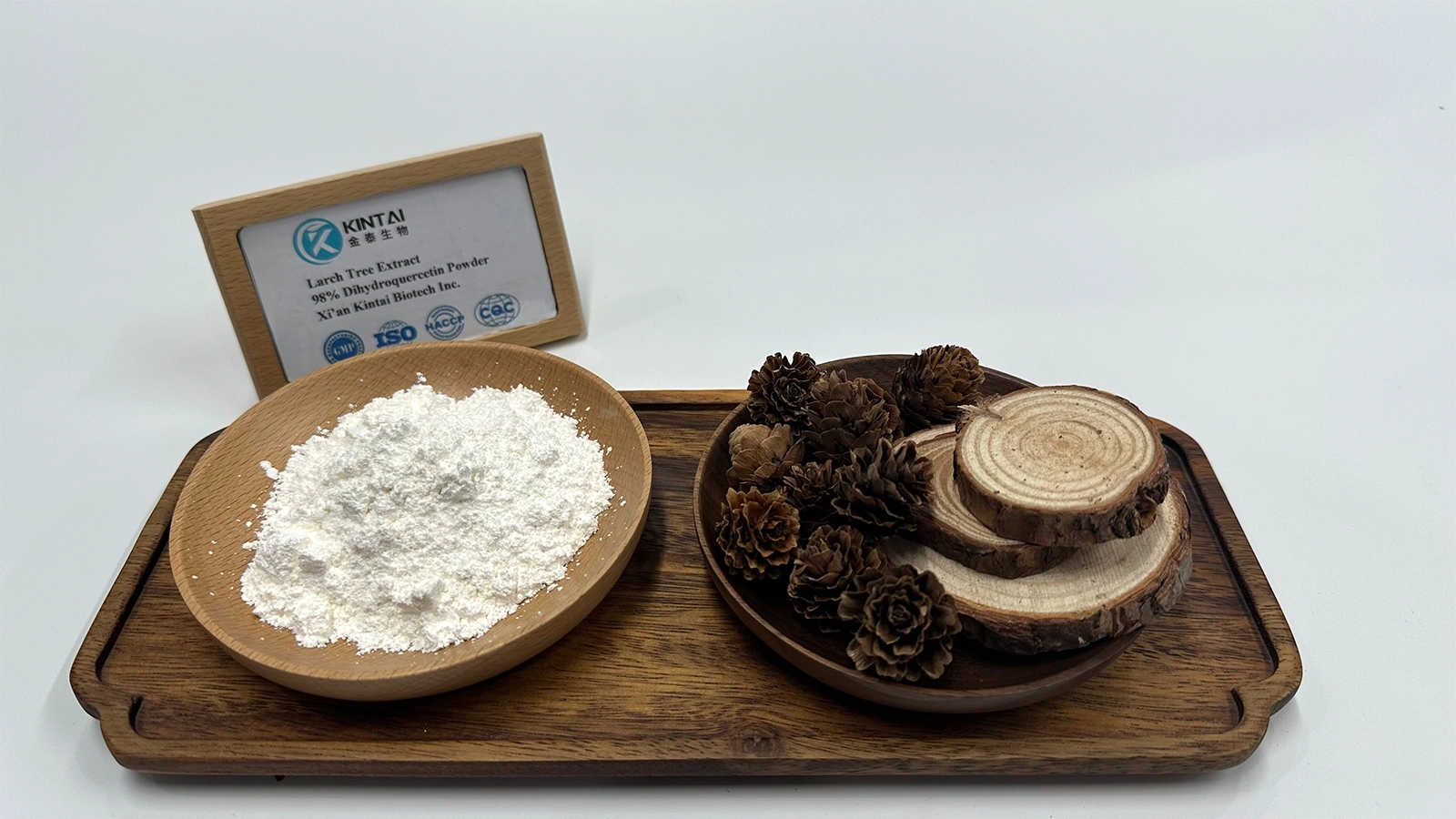
Healthkintai® has been deeply involved in the plant extract industry for ten years. We produce high-quality Douglas fir extract. We have a professional R&D team and a large production plant. We have strict control over raw materials. Furthermore, we offer a variety of grades with purities 98%, fully meeting the diverse needs of cosmetics, functional foods, and pharmaceuticals. If you need high-quality Douglas fir extract, please contact us at health@kintaibio.com.
Douglas fir extract COA&HPLC Report

Dihydroquercetin powder quality specification & standard
|
Product name |
Dihydroquercetin |
|
Extract source |
Douglas fir/Siberian Larch/Pine bark extract |
|
Extraction Solvent |
Ethyl alcohol |
|
Appearance |
White powder |
|
Solubility |
Easily soluble in ethanol, acetic acid, and water |
|
Identification |
HPLC |
|
Sulphated Ash |
NMT 0.5% |
|
Heavy metals |
NMT 20 PPM |
|
Loss On Drying |
NMT 5.0% |
|
Powder size |
98Mesh, NLT90% |
|
Assay |
Min. 98.0% |
|
- Ethanol |
NMT 5000 PPM |
|
Microbiological Quality (Total viable aerobic count) |
|
|
- Bacteria, CFU/g, not more than |
NMT 103 |
|
- Moulds and yeasts, CFU/g, not more than |
NMT 102 |
|
- E.coli, Salmonella, S. aureus, CFU/g |
Absence |
|
Storage |
In Tight, Light-resistant and Dry Place. Avoid Direct Sunshine. Country of Origin: China |
|
Shelf life |
24 months |
Chemical & Physical Properties
|
CAS Number |
480-18-2 |
Molecular Weight |
304.252 |
|
Density |
1.7±0.1 g/cm3 |
Boiling Point |
687.6±55.0 °C at 760 mmHg |
|
Molecular Formula |
C15H12O7 |
Melting Point |
230-233°C (dec.) |
|
Common Name |
Taxifolin |
Flash Point |
264.2±25.0 °C |

Interest? Contact us to get free sample>>>
Effects of Dihydroquercetin on the Optic nerve
Optic nerve injury (ONI) is a common and serious complication of traumatic brain injury, and its clinical treatment faces many challenges. ONI, accounting for 2% to 5% of traumatic brain injury cases, mostly occurs in the optic canal segment, primarily as an indirect injury.
Dihydroquercetin (DHQ), as a natural bioactive agent, offers new hope for ONI treatment. Douglas Fir Extract is mainly derived from plants such as larch, and has also been found in fruits in recent years. DHQ belongs to the vitamin P group and possesses strong antioxidant, free radical scavenging, and anti-inflammatory biological activities [8]. Its antioxidant capacity is particularly outstanding, showing significant advantages over traditional antioxidants such as vitamin E, vitamin C, and coenzyme Q10 [9]. In the pharmaceutical field, DHQ has shown potential application value in the treatment of free radical-related oxidative damage diseases, cardiovascular diseases, and as an anti-radiation drug. Moreover, its biosafety is extremely high, and rigorous testing has shown no obvious toxicity or adverse effects, providing strong support for its research and application in the treatment of ONI.
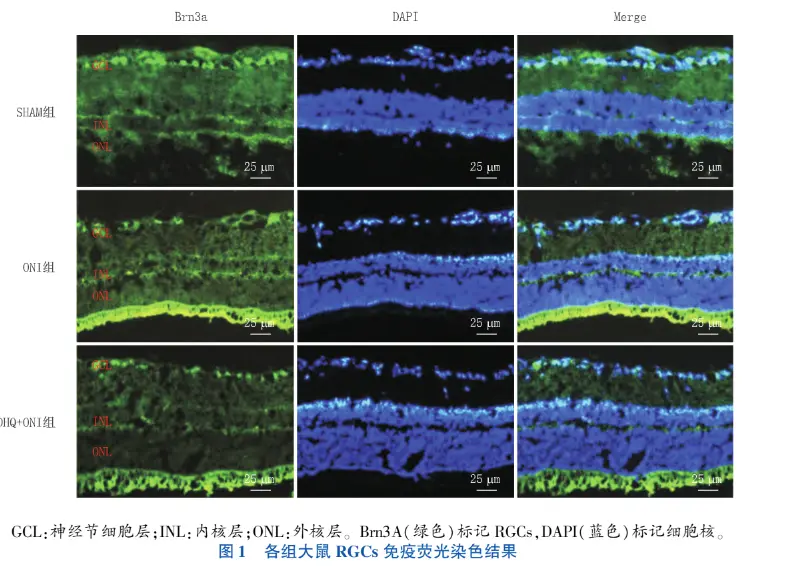
(Reference:Study on the protective effect and mechanism of dihydroquercetin against optic nerve injury)
Douglas fir extract Benefits
1. Antioxidant and Stability
Dihydroquercetin, hailed as the "King of Vitamin P," boasts antioxidant capabilities far exceeding those of common antioxidants like Vitamin C and Vitamin E. It effectively neutralizes and eliminates free radicals in the body, slowing cellular oxidative damage at its source and delaying the aging process. More importantly, its unique saturated molecular structure endows it with extremely high physical and chemical stability, making it resistant to oxidative decomposition. This means it maintains its activity for a long time, both in the body and during product storage, ensuring lasting and reliable efficacy.
2. Safety
Compared to many other flavonoids (such as quercetin), Douglas Fir Extract exhibits superior bioavailability due to its specific molecular configuration, meaning the body can absorb and utilize it more effectively. Furthermore, as an extract from natural plants (such as the North American yew), it possesses excellent biocompatibility and extremely high safety. Numerous studies have shown that it has extremely low toxicity, is safe for long-term use, and has a protective rather than burdensome effect on metabolic organs such as the liver, making it particularly suitable for long-term health maintenance and high-end dietary supplements.
3. Broad Bioactivity
The advantage of dihydroquercetin lies not only in its single antioxidant properties, but also in its synergistic mechanism of action involving multiple targets and multiple functions. While effectively protecting the cardiovascular system, regulating blood lipids, and combating inflammation and allergies, it can also significantly enhance immunity and repair chemically induced liver damage. This "multi-functional" characteristic allows it to address multiple health issues with a single ingredient, making it highly valuable in pharmaceuticals, health supplements, cosmetics, and functional foods, providing a strong natural material basis for developing comprehensive health solutions.
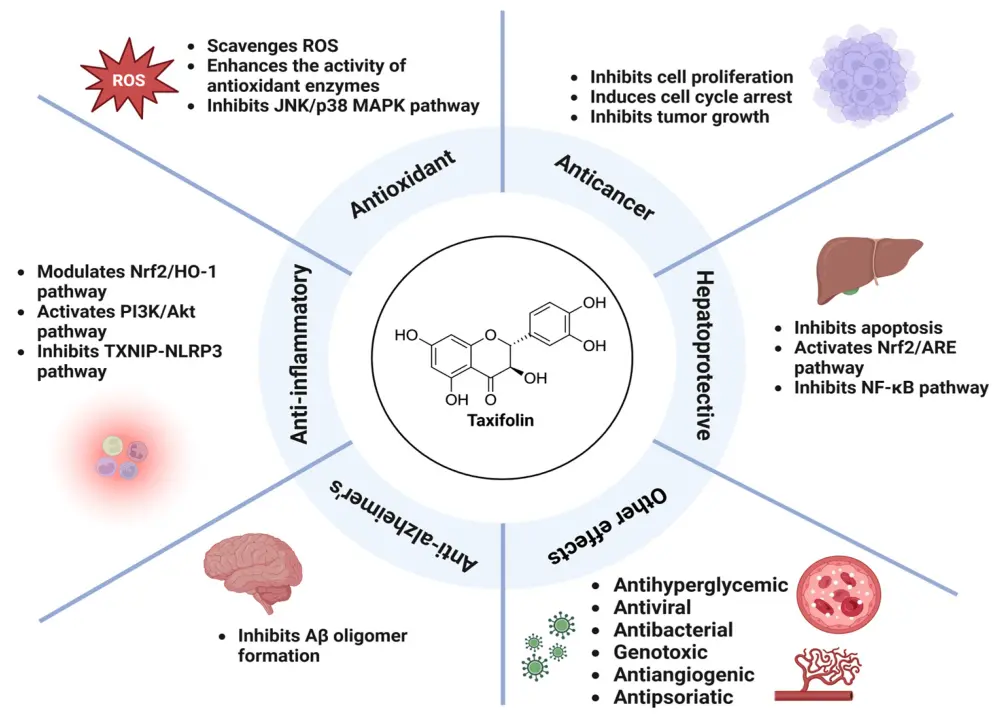
Douglas fir extract dihydroquercetin Side effects
Although dihydroquercetin is considered a relatively safe natural compound, the following points should still be noted when using it:
1. Potential Drug Interaction Risks
This is the most important aspect to be aware of. Dihydroquercetin may affect the activity of a group of metabolic enzymes in the liver called cytochrome P450 (particularly the CYP family). If taken concurrently with certain prescription medications, dihydroquercetin may alter the concentration of these drugs in the blood, leading to abnormally enhanced (increased risk of side effects) or diminished (affected treatment efficacy). Therefore, individuals taking any prescription medications should consult their doctor before use.
2. Precautions and Mild Discomfort in Specific Populations
Due to a lack of sufficient safety studies, pregnant women, breastfeeding women, and infants should avoid use to prevent unknown risks. In the general population, a very small number of individuals may experience very mild gastrointestinal discomfort, such as heartburn, nausea, or bloating, upon first use or at an inappropriate dosage. This is usually related to its properties and will subside spontaneously after reducing the dose or discontinuing use.

Why Choose KINTAI DHQ?
Kintai is a leading plant extract manufacturer in China. We select premium raw materials to provide you with 98% dihydroquercetin. We have a professional R&D team and a large-scale production facility, enabling us to customize different concentrations and dosage forms to meet your needs, and we can also provide formulation suggestions. If you require high-quality Douglas Fir Extract, please feel free to contact us at health@kintaibio.com.

FAQ
Q1: What is the Douglas Fir used for?
A1:Douglas fir (Pseudotsuga menziesii) is a cornerstone of the timber industry, prized for its strength, stiffness, and straight grain. Its primary use is in construction, where it is milled into dimension lumber for framing houses, and for making beams, posts, and roof trusses. It is also a vital source of plywood for sheathing and subflooring.Beyond structural applications, Douglas fir is used for flooring, millwork, and doors due to its attractive appearance. It is also harvested for Christmas trees and is sometimes used in the production of paper pulp. Its excellent acoustic properties make it a preferred wood for soundboards in some musical instruments. In short, it is a versatile and immensely valuable softwood.
Q2:Is Douglas Fir Extract edible?
A2:Yes, Douglas fir extract is generally considered edible and is used as a natural flavoring. It is derived from the green needles and young shoots of the tree.This aromatic extract captures the essence of the tree, which has a bright, citrusy, and resinous flavor profile. It is used in small, culinary quantities to flavor various products. You can find it in specialty foods like syrups for cocktails, infused sugars, baked goods, and even some artisanal ice creams. It is also used to flavor certain gins and other botanical spirits.As with any supplement or natural product, it's crucial to ensure it is sourced from a reputable supplier intended for culinary use and to consume it in moderation.
Q3:Is Douglas Fir toxic to humans?
A3:No, the Douglas fir (Pseudotsuga menziesii) is not toxic to humans and is generally considered safe. In fact, certain parts of the tree are edible and have been used traditionally.The green, young tips of the branches can be brewed into a vitamin C-rich tea or used as a flavorful, citrusy herb in cooking, syrups, and even beer. However, it is crucial to note that some people may experience mild allergic reactions or stomach discomfort, as with any new food.While the tree itself is not poisonous, it is always recommended to consume it in moderation and ensure proper identification, as it can be confused with toxic yew trees, which have flat, dark green needles unlike Douglas fir's soft, single needles.
Our Certifications
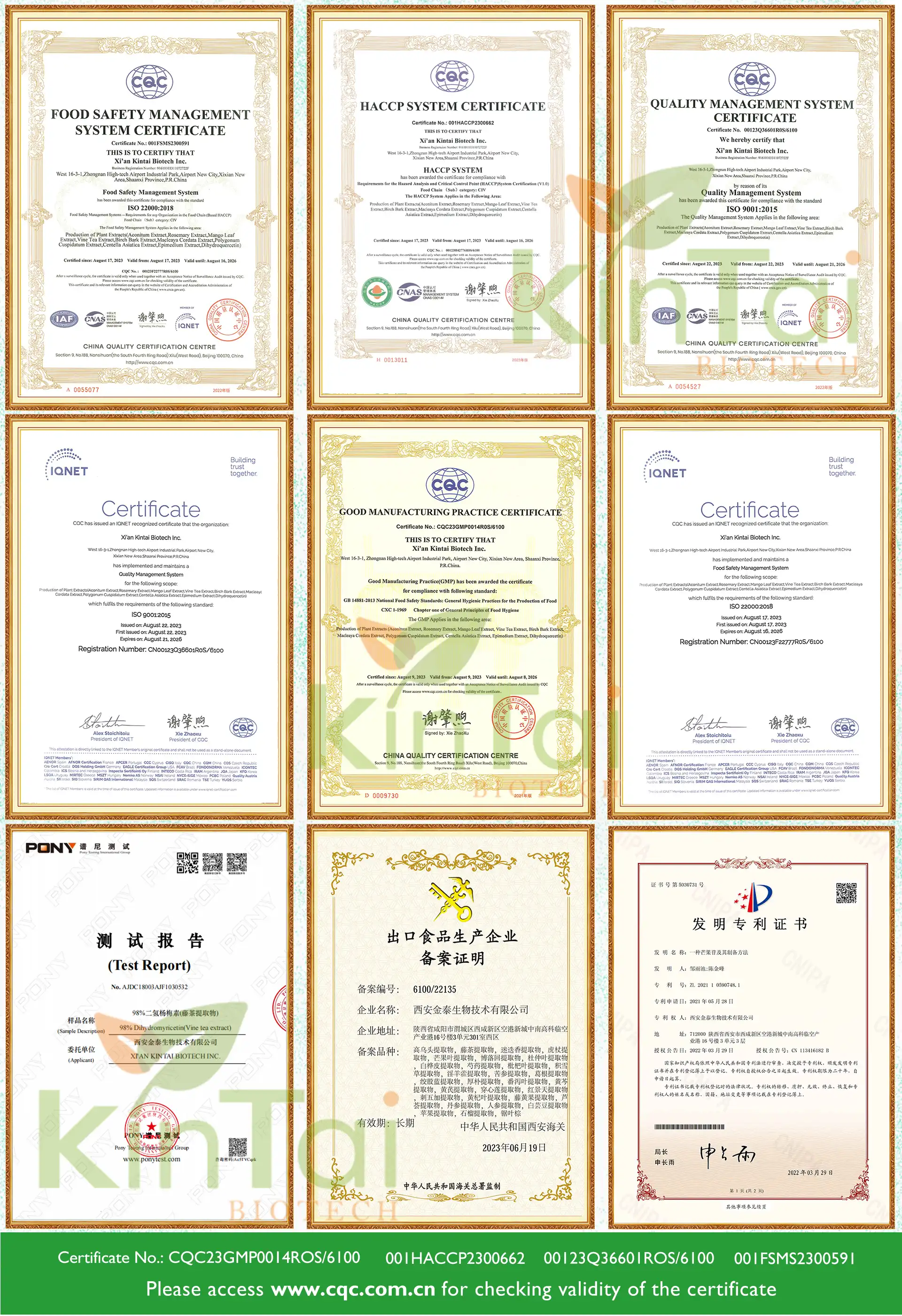
Send Inquiry
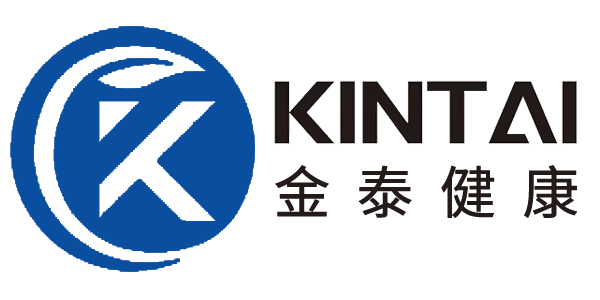
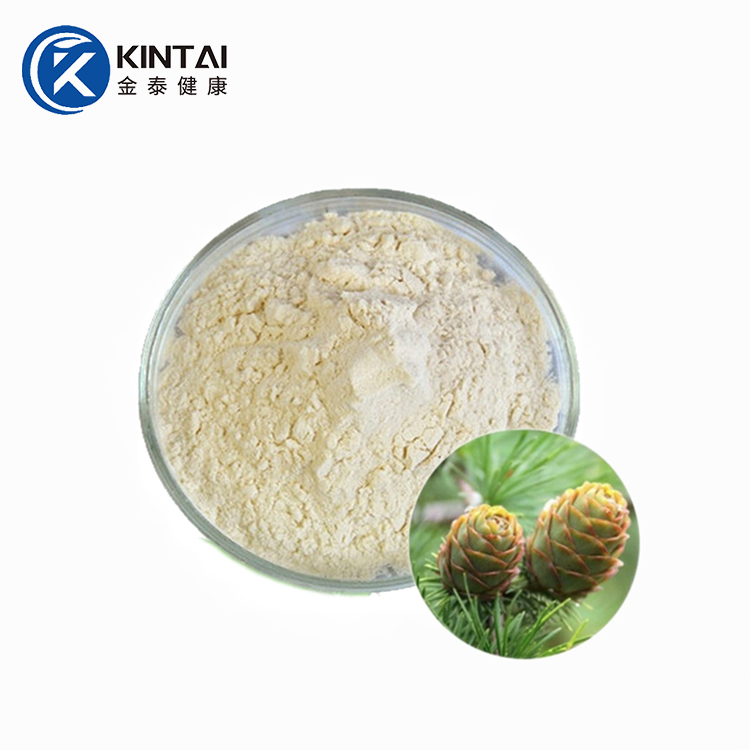
_1742797018644.webp)

_1763003911858.jpg)


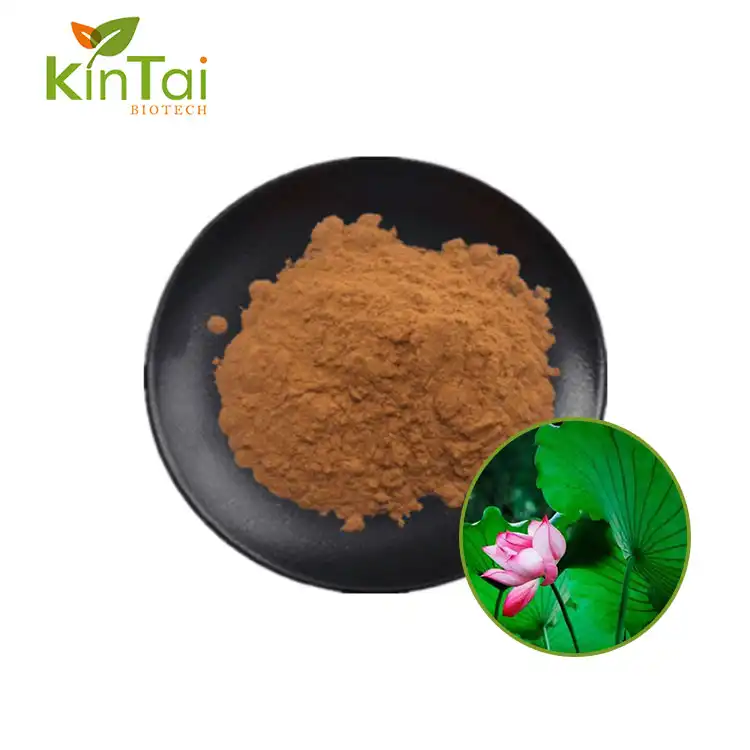

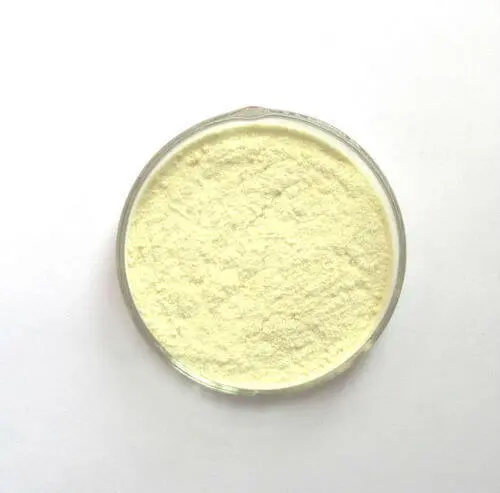
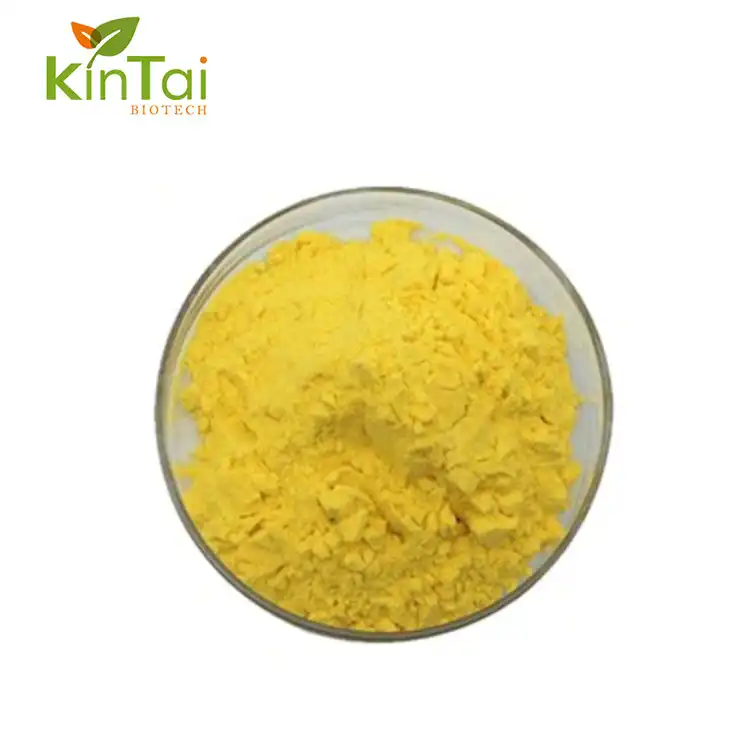
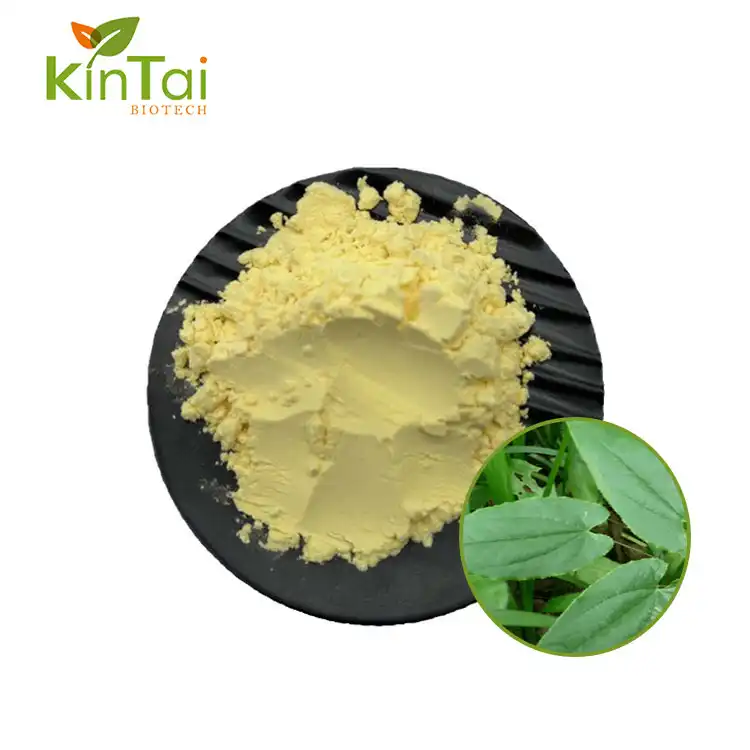
_1758523611239.jpg)
